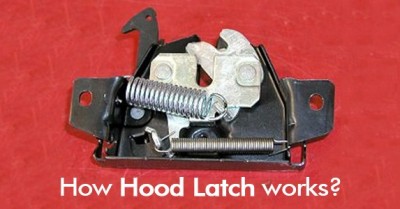Types of Window Regulator

A window regulator is a mechanical system at the back of a door panel that is engaged for moving a glass window up or down along an ongoing track. Primary window regulators which have been around since encircled automobiles were first launched 100 years ago are run by a hand crank, and power window regulators use an electric motor to do the work of activating the glass along its path.
Fixing window regulators usually need laborers’ help. The first inner door panel requires it to be cut down along with any weather barrier layers behind them. Then, the window regulator can be reached by cutouts on the interior door frame. Several times, rivets must even be drilled out to eliminate an old window regulator system.
Main Types Of Window Regulator
Scissor
Scissor-type window regulators are an elderly type that we will get mostly on superior vehicles. Established with virtually all metal elements, a central arm is joined to the window carriage/tray on one end and a big plate with gear teeth on the other. If a scissor-type system is powered, an electric motor turns a worm gear that coordinates with those teeth to move the arms. When the power motor is absent, a manual crank handle provides a similar function.
The main arm is traced through a minor secondary arm at a hinged center point, and both arms slide on small wheels along a groove in the bottom of the window tray as they push the window up or pull it down. Scissor-type regulators may dismiss when wheels at the end of the arms wear out and break off. Give rise to the glass to tilt at an angle inside the door. When the main hinge wears between the two bars as they scissor up and down, the whole system makes noise pollution and the glass will rattle in a sloppy, newly added fashion.
Cable
Cable-driven window regulators have become famous with automakers in recent decades because their compact size brings more room inside the door for safety beams and airbags, their lighter weight contributes to overall fuel economy, and the integrated system decreases manufacturing prices. Therefore, they actually have more parts and are more complex than scissor-type regulators.
Cable-driven regulators all feature a metal track or tracks mounted vertically inside the door panel that contributes as a guide piece or pieces when the window tray slides upwards and downwards. Depending on the design, some setups have one main regulator track in the center of the door, and other setups will have a track on each side of the glass. Window regulators with one center track typically feature two minor guide rails along window edges to save window wobble while traveling.
In cable-type setups, an electric motor or manual crank moves wire cables that travel across the series of pulley wheels before connecting to a window tray or clamps. As the cables are pulled fore and aft, the window opens or shuts down. Cables decline the full weight of our window, and if they (or the pulley wheels or even plastic window trays) break then the glass will fall unimpeded all the way down into our door panel and be stuck there.
Another weak spot of cable-type regulator systems is pulley wheels that can become shredded if cables run over them at angles that are askew instead of completely straight. A condition that develops if guide rails become warped for any cause.
Manual Window Regulator
The scissor and cable-type regulators can be set up for manual functionality with a handle sticking through the door panel to control the up and down movement of the glass window. Humans are the ‘’source’’ at the back of these types of manual window regulators because the window crank needs to be physically rotated to raise and lower the door glass. As the hand-cranked is turned, a plate that gives support to the glass lowers or raises the window into the wanted designation.
We observed that most vehicles today are equipped with power windows, the expression ‘’roll down your window” is still used because it has become so ingrained in our language, dating back to when cranking window levers through hand was the only option.
Power Window Regulator
In a power window setup, a compact electric motor conveys its motion through a worm gear and a number of spur gears. The end result is important to gear reduction which permits a tiny motor to develop enough torque to do the work of moving a heavy window system over and over. It’s amazing to observe that most worm gear brings a self-locking function thanks to gear ratios and patterns of contact, that’s why it’s not possible to convince a power window to open.





















Comments (0)